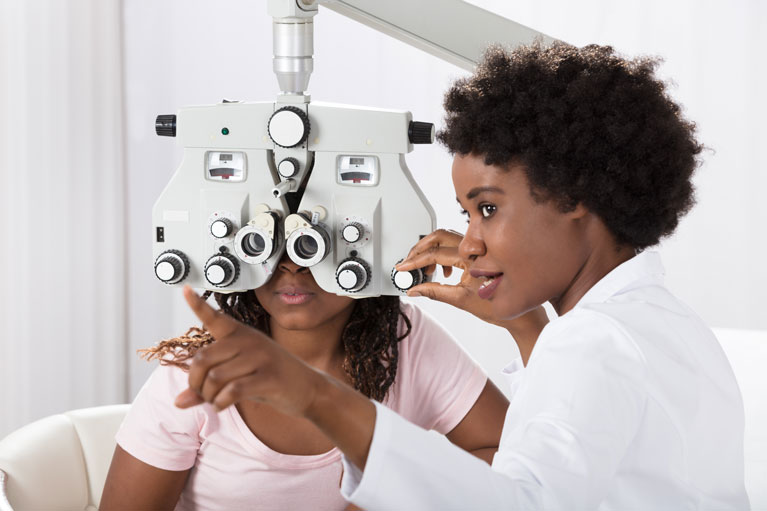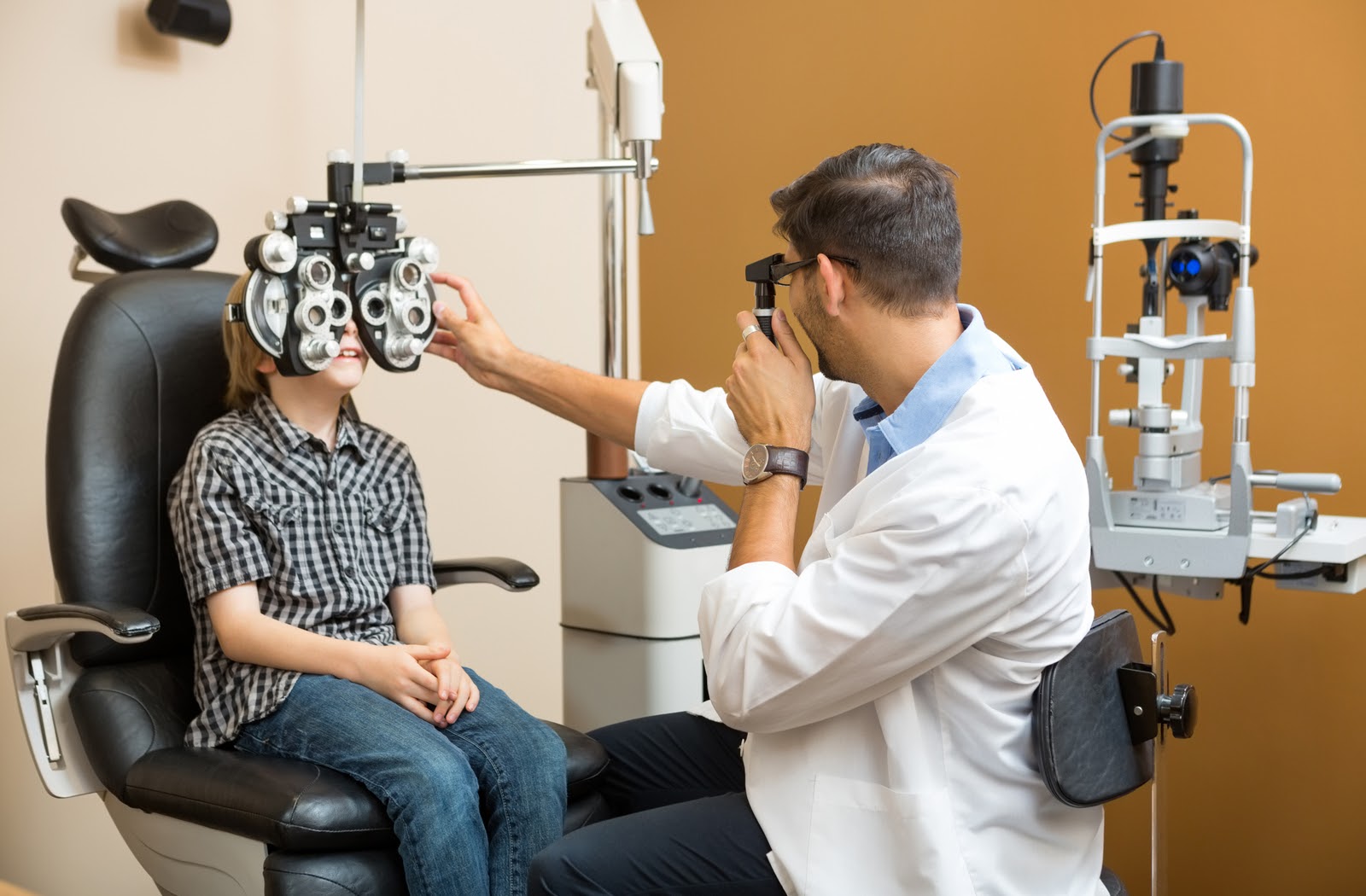Reputable Eye Doctor for All Your Vision Requirements in Riverside
Reputable Eye Doctor for All Your Vision Requirements in Riverside
Blog Article
The Comprehensive Eye Exam: What to Expect During Your Visit to the Eye Doctor
A visit to the eye medical professional for a thorough eye examination is more than a regular examination; it is a vital step in protecting your visual health. What precisely takes place during the eye wellness assessment, and exactly how does it affect the prescription procedure?
First Appointment
The preliminary assessment throughout an eye examination serves as a crucial foundation for recognizing an individual's visual wellness needs. This phase sets the tone for the whole examination process, permitting the optometrist to collect essential info concerning the individual's case history, way of life, and specific vision issues. By diligently examining any kind of pre-existing conditions, medicines, or previous surgeries, the eye treatment professional can tailor the exam to deal with specific requirements properly.

Moreover, the first assessment is a possibility for patients to voice any type of inquiries or concerns, cultivating a joint connection with their doctor. This communication not just makes sure that the individual feels notified and comfortable however also empowers them to participate actively in their eye health administration. Jointly, these discussions enable the optometrist to design a personalized examination strategy, making sure ideal care and precise medical diagnosis.
Visual Acuity Examination
Kicking off the core parts of an eye assessment, the visual skill test is made to examine the sharpness and clearness of a patient's vision. This essential examination helps establish exactly how well a person can discern letters or icons at a standard distance, commonly utilizing a Snellen graph (Eye Doctor). The graph comprises rows of letters that decrease in dimension from leading to bottom, with the person positioned at a normal distance of 20 feet
During the examination, the client is asked to cover one eye and review out loud the tiniest line of letters they can see clearly. This process is duplicated for the various other eye. The outcomes are recorded as a fraction, with 20/20 vision showing normal visual acuity-- where the individual can see at 20 feet what an individual with regular vision can see at that distance.
The visual acuity examination additionally identifies possible refractive mistakes such as hyperopia, astigmatism, or nearsightedness, which might demand restorative lenses. By establishing a baseline of aesthetic performance, the examination is a vital diagnostic tool that assists the eye care expert in developing an ideal treatment strategy tailored to the client's unique visual needs.
Eye Health Assessment
Complying with the visual acuity examination, an extensive eye health and wellness assessment is performed to guarantee the general well-being of the eyes. This critical sector of the eye test entails a thorough evaluation of both the external and inner structures of the eye. The ophthalmologist or optometrist starts by taking a look at the eyelids, cornea, conjunctiva, and sclera for any signs of infection, inflammation, or problems. Making use of specific equipment like a slit light, the expert obtains an amplified view of the eye's anatomy, allowing comprehensive inspection.
With the usage of ophthalmoscopy or fundus digital photography, the retina, optic nerve, and blood vessels are meticulously examined. In lots of instances, pupil extension is performed to boost exposure of the internal eye frameworks, although this might result in short-term light sensitivity for the patient.
In addition, intraocular pressure is gauged to screen for glaucoma risk. This is typically done using tonometry, which can identify elevated pressure degrees that may suggest possible damages to the optic nerve. Jointly, these evaluations create a detailed analysis to maintain ocular health.
Refraction and Prescription
Just how does one guarantee optimum vision? A vital action depends on the procedure of refraction and obtaining an exact prescription. Refraction is an advanced procedure conducted by eye care experts to figure out the exact lens power needed to fix refractive errors such as myopia, astigmatism, hyperopia, and presbyopia. The objective of this procedure is to examine just how light bends as it goes through the eye, enabling the practitioner to establish whether restorative lenses are essential for improved visual acuity.
During the refraction procedure, the individual is asked to browse a phoropter, a gadget which contains different lenses. The expert will systematically alter these lenses and ask the individual to contrast clarity between options until the ideal feasible vision is attained. This treatment is important in crafting an exact prescription that defines the appropriate lens power for glasses or contact lenses.
The prescription acquired from this treatment not only maximizes vision yet likewise functions as a structure for picking appropriate restorative eyeglasses. It is important to ensure that prescriptions are routinely upgraded, as adjustments in vision can occur gradually, emphasizing the importance of routine eye exams. This precise interest to detail assists maintain clear, comfortable vision in day-to-day live.
Follow-Up Suggestions

Throughout a follow-up visit, the eye physician will conduct a collection of tests to assess aesthetic skill and check for any type of changes in vision that could necessitate an why not look here update to the prescription. Furthermore, the follow-up provides a chance to go over any type of pain or issues experienced with current eyewear. Modifications can be made to make sure convenience and efficacy, whether via lens alteration or frame changes.
For clients with ongoing problems such as glaucoma, diabetes-related eye problems, or macular deterioration, even more constant follow-ups may be needed. These visits are essential for taking care of and potentially reducing the progression of eye condition. Following these recommendations can considerably add to maintaining visual wellness and protecting against long-term difficulties.
Conclusion
The detailed eye test is a necessary process for preserving aesthetic wellness, encompassing a comprehensive assessment of case history and vision concerns. Trick components include the visual acuity test, which assesses eyesight clarity, and the eye health analysis, which checks out the general condition of the eyes. Refraction tests assist determine the specific lens prescription required for ideal vision modification. Follow-up referrals supply advice for recurring eye treatment, making sure that any kind of prospective concerns are addressed promptly and successfully.
A browse through to the eye physician for a thorough eye test is even more than a regular examination; it is a critical step in guarding your aesthetic health.Kicking off the core components of an eye assessment, the visual anchor skill examination is developed to evaluate the intensity and clarity of an individual's vision.Following the visual acuity test, a thorough eye health and wellness evaluation is conducted to guarantee the general wellness of the eyes. These visits allow the eye care expert to keep an eye on modifications in vision, upgrade prescriptions, and evaluate the total health and wellness of the eyes. Trick elements consist of the visual acuity examination, which evaluates eyesight clearness, and the eye health analysis, which takes a look at the total condition of the eyes.
Report this page